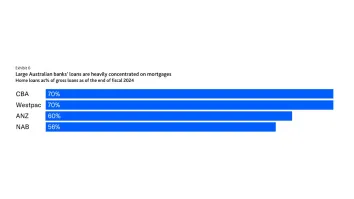
How do Asian banks respond to the digital wallet boom?
Their own digital wallets were built around customers’ payment preferences.
After Citibank launched its Citi Pay app for Android devices in Singapore, the bank later added both Samsung Pay and Apple Pay capabilities to its digital wallet, in line with the island’s growing demand for a wider range of payment options. This thirst for flexibility when it comes to transaction payments has made digital wallets a critical battleground for banks that want to defend their cards and payments businesses.
Like Citi, some Asian banks are fast-tracking the development of their own digital wallets to catch up and compete with rivals, whilst others are exploring ways to work together with wallet providers, according to Varun Mittal, ASEAN fintech leader at EY.
“We are seeing a transition period where banks are starting to adapt not just more fintech-like services, but also more ‘FinLife’ ones that are specifically designed to fit into a customer’s lifestyle,” said Mittal. “By engaging customers with lifestyle products that encourage them to interact with the bank more often, they are also lowering the risk of disintermediation.”
Citi, for example, dug deep into the payment preferences that are unique to its Singaporean clients and built the digital wallet around those key considerations. “We are seeing an increasing trend of customers preferring to use their mobile wallet when contactless payment is available,” said Vikas Kumar, head of cards and personal loans at Citibank Singapore.
He adds that the Samsung Pay service in its mobile wallet incorporates the bank’s Pay with Points programme, which accounts for more than one in three redemptions of points or miles.
Both globally and in the Asia-Pacific region, wallets are gaining wider acceptance in the market and the line between wallets and card schemes are blurring, noted Mittal. “Some of the large Chinese wallet companies focusing on competing with card networks not just on data, but by becoming a more holistic service and expanding their infrastructure,” he added.
Interoperability arena
The encroachment of wallet rivals into traditional banks’ cards and payment business is further complicated by the issue of interoperability, where Mittal said banks are demanding to a see a more level playing field.
“At the moment, the cost of compliance is significantly higher for traditional banks than it is for smaller wallet players,” he said. “So, banks are asking the regulators to streamline compliance models and make the requirements similar across the board to make it a fairer game.”
However, questions remain around who should provide QR code technology to merchants and whether wallet companies should pay a service fee to use the banks’ existing infrastructure, according to Mittal. The commercial model also continues to provide uncertainties, especially on who among the stakeholders—the issuer, providers, merchants, or end customers—should ultimately pay the fees for it.
Some banks are taking a more proactive stance, with UOB building an interoperable cashless acceptance network in Singapore as part of its thrust to grow its e-payments. The bank has rolled out more than 10,000 contactless unified point-of-sale terminals, which accept various forms of cashless payments, including for transit.
Jacquelyn Tan, head of personal financial services Singapore at UOB, said a majority of Singapore residents rely on public transport for their daily commute, which convinced the bank to seek tie-ups with the Land Transport Authority, TransitLink, and Mastercard to facilitate contactless credit and debit card payments for public rides in Singapore. Industry efforts to move towards unified digital payments should also further support the growth of such transactions on mobile devices.
“As the industry works together on common e-payments standards, such as SGQR, the digital payment journey will become seamless across different mobile phone operating systems and payment apps,” said Tan. “This means that consumers can expect the same simple, safe, and intuitive experience when they make e-payment transactions—no matter where they are or whichever e-payment service they choose.”
Targeted, specialised offers
The competitive pressure from wallet companies comes on top of the heated rivalry in the traditional cards market, which Mittal reckoned is increasingly crowded. Customers are constantly bombarded with advertising and offers in social media and other digital platforms, which presses banks to go beyond cookie-cutter services.
“In this environment, even smaller players are able to compete, so Asian banks need to look for new and innovative ways to stand out from the crowd,” Mittal said.
Sourcing alternate revenue streams through more targeted and specialised offers that go after a particular lifestyle need will be key. For example, tailoring cards that provide particularly good offers around transportation or telecommunications merchants could help engage targeted customer groups, according to Mittal.
Kumar said an open architecture approach has helped boost Citi’s digital acquisition efforts even amidst this glut for card offers. Through API integration, customers can apply for Citi credit cards directly on SingSaver, MoneySmart, and BankBazaar as well as receive quick in-principle approval. The bank estimates that such partnerships and collaborations with large e-commerce brands such as Lazada now account for more than half of its digital card sign-ups.
UOB, meanwhile, discovered that most consumers do not like to take up their phone’s storage space with too many apps. This insight formed the basis of its banking app UOB Mighty, which seeks to integrate all digital payments within a single app.
“Customers do not need to toggle between multiple apps to send money to their friends and family through PayNow, scan and pay with NETS QR Code, or to tap their mobile phones at contactless point-of-sale terminals to make payments,” said Tan. “They can do all this easily from the home screen of our app.”
Lifestyle approach
UOB also drew on data to guide its digital efforts to deepen customer engagement. Having observed a shift to online options in the way people plan and book their travel, the bank created a travel-oriented online marketplace called The Travel Insider in March. The initiative—which UOB said is the first by a bank in Southeast Asia—assists customers when they search, plan, and book their holidays.
Tan said UOB card members spent 20% more in 2017 than the previous year on travel-related spend online, which includes e-commerce spend on airlines, cruises, online travel agents, hotels, tour packages, and land packages. “However, whilst people are using online travel resources more, the experience of researching and booking the best deals online can still be quite time consuming and tedious,” she said, noting that users no longer had to search through different online websites to research and compile a travel itinerary and best travel deals for their trip.
The bank tapped into a broad range of partners to set up The Travel Insider, which currently offers 350 UOB card member exclusive deals, including British Airways, Cathay Pacific, Club Med, Contiki, Emirates, and Insight Vacations. UOB used the APIs of both online travel platforms Agoda and Expedia to select the best deals from more than a million hotel and flight possibilities specifically for their customers’ preferences.
Cybersecurity threats
As customers start to demand wider mobile access to cards and payments services from their phones and other devices, Mittal said banks face greater vulnerability to cybersecurity threats that may already be on the device or could be inadvertently downloaded when a customer uses other apps and sites outside the bank’s direct control.
“At the same time, the risk from phishing attacks has also increased significantly as more sophisticated technology makes for easier replication of these attacks,” he added.
This has led Asian banks to work with cybersecurity and technology companies to develop software and back-end systems that bolster security regardless of which device a bank’s products or services are being accessed from.



















 Advertise
Advertise










